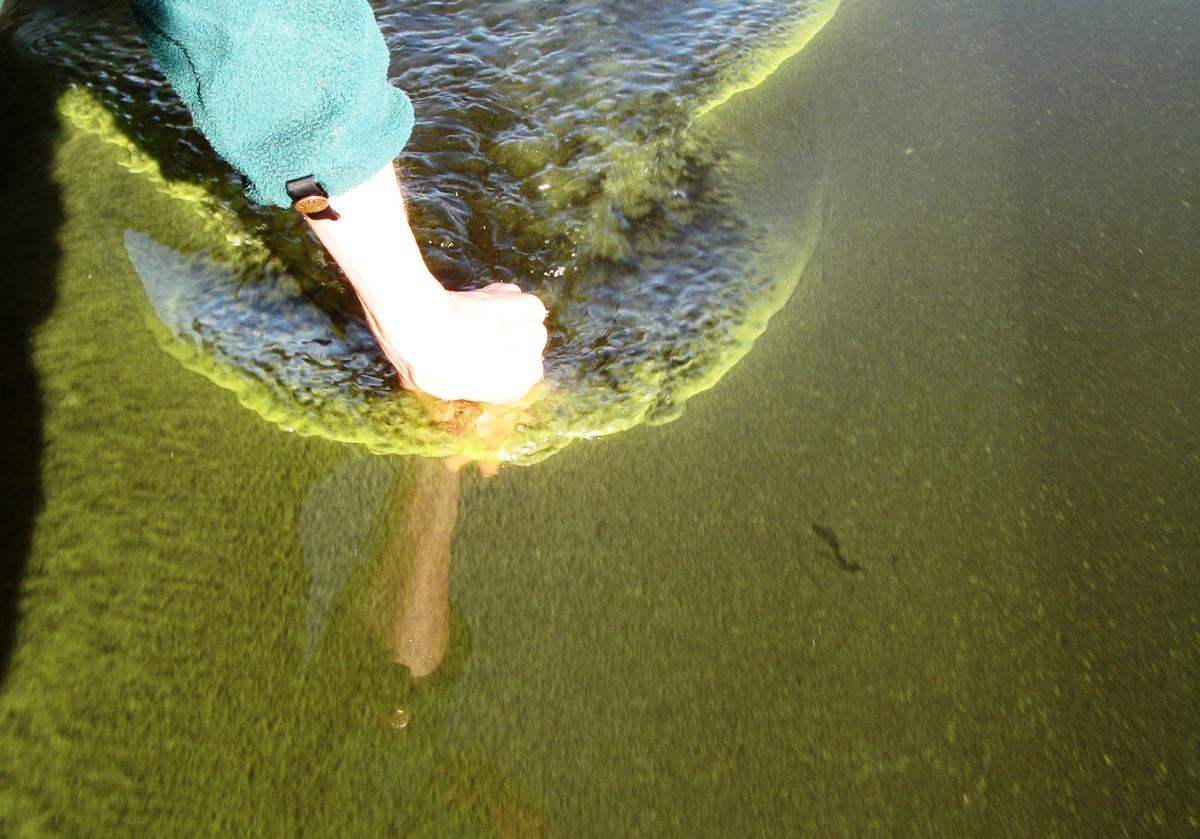It should have been this simple: stop sending excessive nutrients into Lake of the Woods and the toxic algal blooms will stop.
So the paper mills upstream curbed their phosphorous discharges in the 1980s. But the blooms persisted and the scientists were flummoxed. More than just gross, toxic blue-green algae (cyanobacteria) are bad for the fishery and a health concern for people and pets.
“We don’t swim in August and we don’t let the dogs in the water,” said Kay Arnesen, co-owner of Arnesen’s Rocky Point Resort on the shores of Lake of the Woods.
NRRI Researcher Euan Reavie teamed up with the St. Croix Watershed Research Station to find out what else might be causing the blooms. What they learned surprised them, and results were published in Lake and Reservoir Management, December 2017.
Using paleolimnology to reconstruct water quality changes over time, it was clear to Reavie that human activity on the land (agriculture, urbanization and industry) was a large part of the algal problem. But once best management practices were in place, the ecosystem should have recovered.
“Phosphorous problems in lakes can sometimes solve themselves if we cut off the source,” Reavie explained. “Algae and other organisms take up the nutrients, die and sink to the bottom where it gets buried, hopefully forever.”
The reason Reavie was surprised is that Lake of the Woods is a large, shallow lake. The water should readily mix, keeping the lake well oxygenated. The stored phosphorus at the bottom of the lake is more likely to release when it’s deprived of oxygen; and that was not expected in Lake of the Woods.
But they discovered that it does happen when the summers are particularly warm and calm. This could be the impact of climate change.
“Turns out, the lake is periodically stratifying,” said Reavie. “The surface gets warm and creates a warm layer on top that doesn’t mix with the lower, cooler layer, and bacteria in that isolated lower layer suck up all the oxygen. Deeper lakes typically stratify like this. I just never thought it would happen on Lake of the Woods.”
Still, there’s an end in sight. Reavie, Mark Edlund and other researchers from the Research Station concluded that the lake’s flow-through system will eventually wash the excess nutrients out of the basin. They hope to get funding to continue the research.
“This is a hugely popular lake and I’m sure the resort and home owners would like to know that these algae problems won’t last forever,” Reavie added.
[PHOTO: Courtesy of E. Reavie/NRRI, 2011 on Fall Lake near Ely, Minn.]
